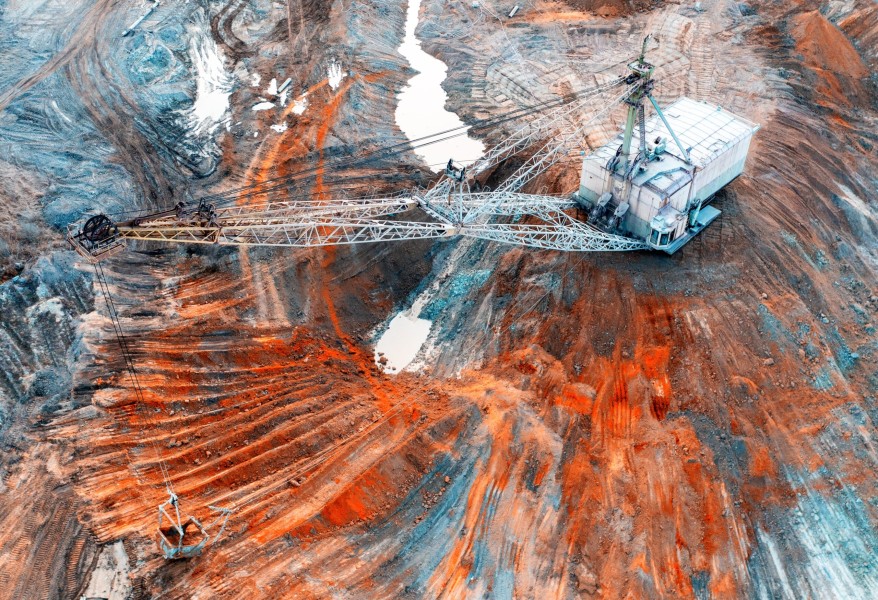Could lithium, copper, nickel and magnesium become more valuable than oil and gas? The World Bank expects the demand for these materials to increase by 500% by 2050. Known as critical raw materials (CRMs), they are hard to replace and are essential in our transition to renewable energy.

Solar panels and wind farms are popping up everywhere in Europe. However, we will need many more in the coming years if we want to reduce our dependence on fossil fuels. But did you know that the production of photovoltaic cells for solar panels requires tellurium, a material now in such high demand that McKinsey forecasts supply should increase by 850% by 2030? And that a three-megawatt wind turbine needs, among other things, 350 tons of steel, 4.7 tons of copper and three tons of aluminum? Shortage in any of these materials could pose a serious risk to Europe’s Green Deal.
Fortunately, AI and advanced analytics technology can help establish strategic reserves. This will be key for Europe if it wants to realize its ambition to become the first climate-neutral continent.
The Critical Raw Materials Act
Europe has classified 34 materials as critical, meaning they are economically and strategically important but also subject to supply risks. With the Critical Raw Materials Act, the European Commission outlines several actions aiming to ensure access to a secure, diversified and sustainable supply of CRMs. At least 10% of the Union’s annual consumption of strategic raw materials should be extracted in Europe and 40% has to be processed locally. The EU’s recycling capacity must also be capable of producing at least 15% of the annual consumption. And by 2030, no more than 65% can come from a single third country.
While all these benchmarks are important, they also clarify that building strategic reserves will be challenging. Especially as most materials are concentrated in specific geographical areas, CRMs could soon become the foundation of the next geopolitical crisis. Technology will play a critical role if we want to anticipate this scenario and secure Europe’s green energy transition.
There are several ways in which analytics and Artificial Intelligence could help the EU. First, access to data and machine learning will increase transparency for industries that rely on critical raw materials but do not yet fully understand the CRM supply chain. They can use these insights to prepare for future challenges. Second, the extraction of materials must not happen at the expense of nature because that would undermine the EU’s sustainability goals. To maximize the safety and management of mining operations, we can use new technologies that use satellites and earth observation. In addition, the environment can be further protected by improving the circularity and sustainability of CRMs.
Stress testing for CRMs
In the context of CRMs, Europe has created several KPIs that take into account risks from supply chain disruptions, price volatility and gaps in strategic stocks. For each of these, we can use stress testing techniques like how banks evaluate how a hypothetical recession scenario would affect firm capital ratios. Applying this method to test the resilience of our supply chains requires a digital twin, a virtual representation of the entire CRM supply chain network, including extraction, imports, suppliers, EU inventory and end product applications. Using advanced analytics, from AI to machine learning to simulation, econometrics and visual analytics, this model can predict KPIs, quantify risks and recommend well-informed actions.
Once created, a digital twin can serve as a virtual laboratory, providing insights into the future health of the CRM value chain and simulating the outcome of policy, design and investment decisions. Furthermore, the technique can also help Europe improve recycling initiatives that could significantly reduce the market’s volatility. For example, when the EU needs only 200 instead of 300 tons of a certain raw material, this would positively impact the demand.
In other words, a CRM supply chain digital twin can be a crystal ball to predict an extremely uncertain future. It will help EU policymakers overcome challenges that will probably be even bigger than the recent oil and gas crisis. Ultimately, the right insights will pave the way for a green Europe.
Do you want to learn more about how advanced analytics can help Europe overcome the CRM supply chain challenges? Then download and read our free eBook here.
